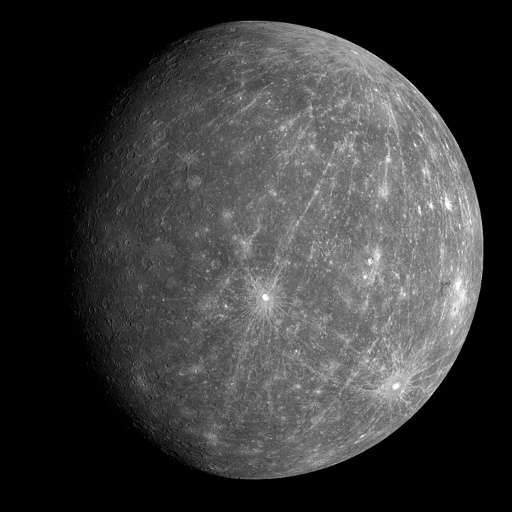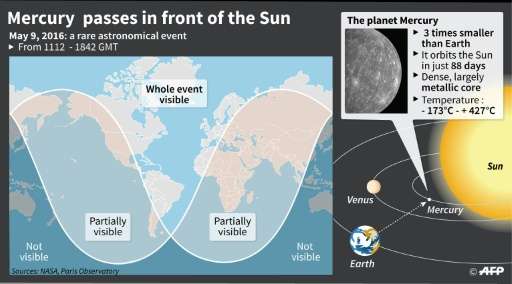Skygazers prepare for rare Mercury sighting

Earthlings will witness Mercury make a rare passage between our planet and the Sun on Monday, appearing as a black dot tracking the surface of the star we share with the solar system's smallest planet.
Mercury completes an orbit every 88 days, and passes between the Earth and the Sun every 116 days, according to the Royal Astronomical Society (RAS).
But its orbit is tilted in relation to Earth's, which means it usually appears—from our perspective—to pass above or below the Sun.
Thirteen times each century, however, the two orbits align such that even amateur astronomers can see the tiny planet tens of millions of kilometres away.
"It is always exciting to see rare astronomical phenomena such as this transit of Mercury," RAS president Martin Barstow said in a statement.
"They show that astronomy is a science that is accessible to everyone."
But be warned: looking directly at the phenomenon can result in permanent eye damage, as only a very small part of the Sun will be blocked out.
One option is to use a telescope or binoculars to project the image onto a white surface.
An image of the Sun is captured by the main, front lens and projected backward, out through the eyepiece. The Sun will appear as a white disk on the card, and Mercury as a black dot crawling over it.

Stargazers can also observe the event through a telescope with a strong filter.
According to the RAS, large parts of the world—most of Western Europe, the western parts of North and West Africa, eastern North America, and most of South America—will be able to view the entire transit, which will last from 1112 GMT to 1842 GMT.
The rest of north and south America, the eastern Pacific, the remainder of Africa and most of Asia, will see parts of the event.
Observers in east and southeast Asia and Australasia, however, will miss out entirely.
French astronomer Pierre Gassendi was the first person to observe a Mercury transit through a telescope in 1631, two decades after the instrument was invented.
German astronomer Johannes Kepler had correctly predicted that transit, but died in 1630 before he could witness the event.
The last Mercury orbit was 10 years ago, and the next will be in 2019.
Mercury is the planet nearest to the Sun. Its elliptical orbit brings it as close to the earth as 46 million kilometres (28.5 million miles), and no further away than 70 million kilometres.
It rotates so slowly—three times for every two orbits—that, bizarrely, Mercury's day is twice as long as its year.
© 2016 AFP




















